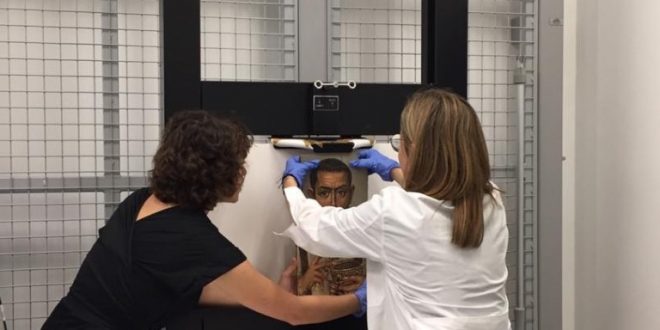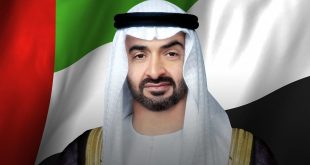Louvre Abu Dhabi has announced its participation in a global research project with the J. Paul Getty Museum and 47 other institutions to investigate Romano-Egyptian funerary portraits, considered to be some of the most spectacular artworks from the ancient world.
Launched in 2013 by the Getty Museum’s Department of Antiquities Conservation, the APPEAR (Ancient Panel Paintings: Examination, Analysis and Research) project aims to analyse and share the secrets of these funerary portraits, found in the collections of several major international museums. The objective of APPEAR is to expand the knowledge and critical understanding of the methods and materials used to create these paintings.
Louvre Abu Dhabi joined the APPEAR project in 2019 to analyse the artwork Funerary Portrait of a Man with a Cup (225–50 CE), a prime example of a Romano-Egyptian funerary portrait in the museum’s collection. Created as portraits of the deceased, these artefacts meld artistic methods and styles of the Greco-Roman period with the 2,000-year-old Egyptian funerary tradition.
The project is led by a team of researchers and scientists from Louvre Abu Dhabi with the support of NYU Abu Dhabi, NYUAD.
“APPEAR is one of Louvre Abu Dhabi’s most significant collaborations to date. Through this project, we seek to encourage scholarly studies, as well as contribute to international academic research,” said Dr. Souraya Noujaim, Scientific, Curatorial and Collections Management Director at Louvre Abu Dhabi. “It is an exciting and inspiring opportunity for the UAE to be a part of this global initiative of exchanging discoveries on some of the world’s most renowned antique artefacts. As one of many research and conservation projects we are working on, APPEAR speaks to the museum’s larger mission to be a platform for experimentation, and to offer significant academic insights into the artworks that have defined humanity.”
APPEAR follows several scientific processes. At Louvre Abu Dhabi, for instance, an X-Ray Fluorescence, XRF, spectrometer has been used to detect and identify most of the chemical elements that lie on the painting’s surface. This data is then analysed to discover new information on funerary portraits, including how they were made, where they originated and who might have created them. The findings also shed light on the journey of the Funerary Portrait of a Man with a Cup throughout time by revealing sections that may have been painted over or restored as the artwork was handed down.
Louvre Abu Dhabi is in the process of building its first laboratory of material analysis on artefacts. For APPEAR, the museum’s scientists, Elsa Bourguignon and Pablo Londero, collaborated with colleagues from NYUAD, Francesco Arneodo, Professor of Physics, and co-Director of the NYUAD Dhakira Centre for Heritage Studies, Adriano di Giovanni, Research Scientist, and Rodrigo Torres Saavedra, Research Assistant. These scientists assisted with conducting the research and analysis to APPEAR using NYUAD’s portable XRF spectrometer.
“NYU Abu Dhabi is a liberal arts college and a research institution, where we highly value interdisciplinarity. Our application of techniques common in atomic and molecular physics to answer questions in the cultural heritage domain is a perfect example of what we love to do,” said Arneodo. “The collaboration with Louvre Abu Dhabi on the APPEAR project is a wonderful opportunity and an example of how universities and museums can work together to answer questions and open opportunities for researchers and students.”
Following the completion of the analysis of Funerary Portrait of a Man with a Cup, the results will be added to the APPEAR online database that is made available to other scientists and researchers. The first results of the findings will be published at the end of 2020.
In addition to the APPEAR project, Louvre Abu Dhabi’s Research and Development department has recently launched several other research and conservation initiatives, elevating the museum’s academic contributions to the field of art history. These projects include programmes on medieval manuscripts and restorations of The Hunts of Maximillian tapestry and the Turkish 16th–17th-century rider and horse armour, which is on view as part of the museum’s recent exhibition, Furusiyya: The Art of Chivalry between East and West.
Social sciences, as well as translation studies in the context of museums, are also a part of Louvre Abu Dhabi’s research programmes, developed in partnership with a network of UAE universities. Such extensive research projects aim to deepen knowledge of the museum’s collection and improve the process of restoring and preserving the key artefacts that have defined civilisations throughout history.
 UAE BARQ برق الإمارات – نبضك
UAE BARQ برق الإمارات – نبضك


